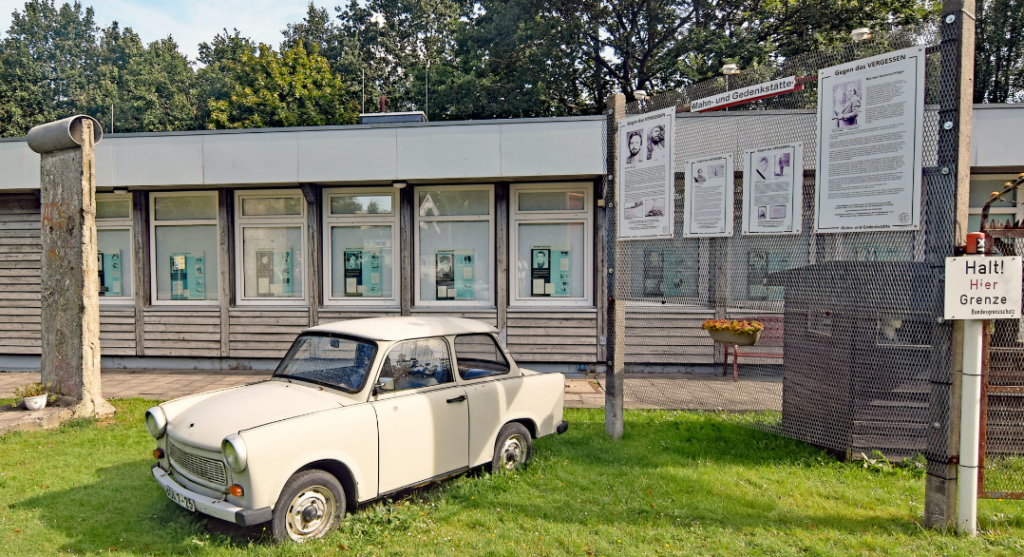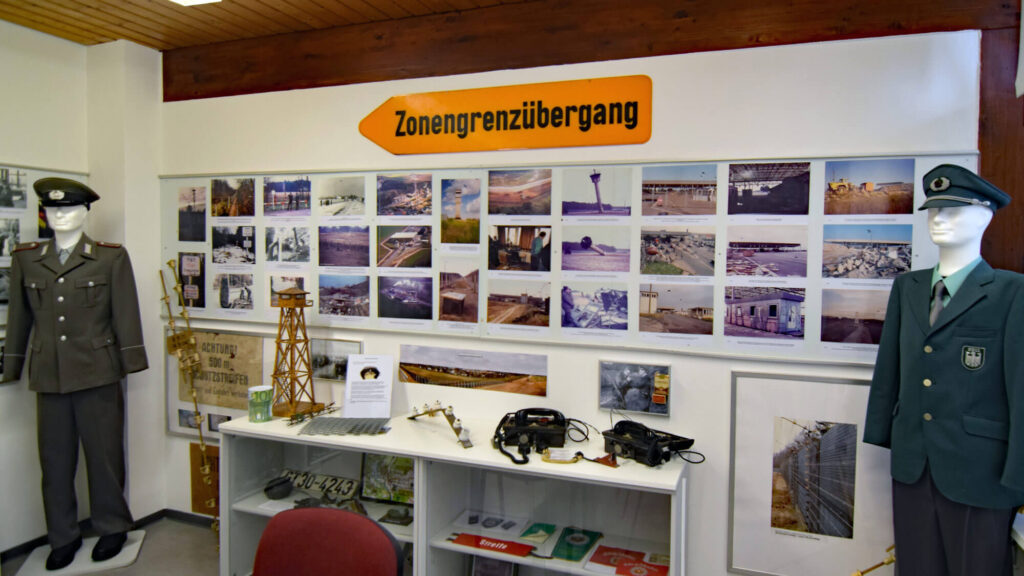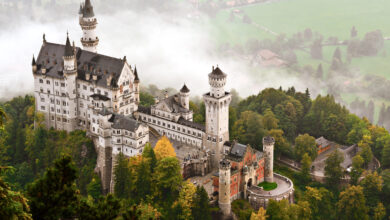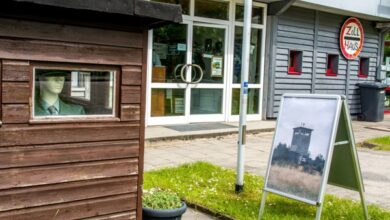Escape or Die: The Perilous Reality of the Inner-German-Border

Following the Ghosts of Division
If you hadn’t told me, I wouldn’t have known. Standing along a peaceful stretch of countryside outside Lübeck, it’s hard to imagine that this tranquil road was once a deadly frontier. But a few decades ago, this was the inner-German border, an impenetrable wall of fences, armed guards, and watchtowers that split Germany in two.
I had traveled to this quiet corner of Germany to explore what remains of this once heavily fortified divide, and it felt surreal to be standing where history had been made. The atmosphere here is striking—serene yet layered with an undeniable weight of the past. It’s impossible not to think about those who lived with this border as an unrelenting presence in their daily lives.
A Walk Through Time: The Lübeck-Schlutup Border Documentation Site
One of the best places to truly understand the history of the inner-German border is the Lübeck-Schlutup Border Documentation Site. Nestled on the outskirts of Lübeck, this small but compelling museum preserves the memory of the division between East and West Germany.
As I stepped inside, I was immediately drawn to the rows of historical artifacts—old war artifacts, stamps, propaganda posters, and even rusted border signs that once screamed warnings at those daring enough to approach. The collection includes everyday objects from the Cold War relics, like East German food packaging, personal letters, and photographs of families separated by politics. Each item tells a story of how deeply this border affected lives on both sides.
One of the most striking exhibits is a video documenting the infamous escape attempts across the border. Many were tragically unsuccessful, but some brave souls defied the odds—digging tunnels, hiding in car trunks, or constructing homemade aircraft to fly over the barriers. Seeing the desperation and determination on their faces was humbling.
Outside the museum, a rusting Trabant, the car symbolic of East Germany, sits frozen in time, as if waiting for a driver who will never return. Walking beyond the building, I found the actual remnants of the border—a simple rock marking what was once a high-security death strip.
What Once Was: Comparing the Berlin Wall vs Inner-German Border
Many people think of the Berlin Wall as the defining symbol of Germany’s division, but the inner-German border was an even more terrifying reality. Stretching for 1,400 kilometers, it was a full-scale militarized zone, lined with anti-vehicle trenches, electrified fences, and heavily armed patrols. Unlike the wall in Berlin, which divided a city, this border sliced through rural areas, separating towns, families, and entire communities.
Unlike Berlin, where escape attempts could sometimes be witnessed and documented, the vast stretches of wilderness along the inner-German border meant that many who tried to flee simply vanished. Locals in West Germany would wake up to rumors of gunfire in the distance, never knowing if someone had made it or perished trying.
The Fall of the Border and German Reunification History
Standing there now, with nothing but a quiet road before me, it was difficult to believe that this border ever existed. But as I looked around, I tried to picture the jubilation of November 1989—the moment when East and West Germans met here in celebration, breaking decades of separation in an instant.
The events of that night led to German Unity Day history, a national holiday that marks the reunification of the country. It’s remarkable to think that this stretch of road, once impassable, is now just another quiet backroad in Germany.

Exploring the Border Today: Cold War Tourism in Germany
For those interested in abandoned Cold War sites, Germany offers plenty of opportunities to explore its divided past. Apart from the Lübeck-Schlutup Border Documentation Site, here are a few other must-visit locations:
- Point Alpha – A former U.S. military observation post near Fulda, offering dramatic views of where NATO forces kept watch on the East.
- Marienborn Border Crossing – Once the most infamous checkpoint between East and West Germany, this site still houses the original watchtowers and customs buildings.
- The Berlin Wall Memorial – Though separate from the inner-German border, this iconic site provides essential context about Germany’s division.
For history lovers, embarking on World War 2 tours in Germany and Poland can add another layer to understanding the impact of borders and occupation throughout the 20th century.
What Borders Germany Today?
After all this history, I had to remind myself: Germany is no longer a divided nation. The country now shares peaceful borders with Denmark, Poland, the Czech Republic, Austria, Switzerland, France, Luxembourg, Belgium, and the Netherlands. Each of these borders represents a different story, from long-standing alliances to once-hostile frontiers that have now become symbols of unity in modern Europe.
Hiking Along the Former Border: Germany Hiking Tours and West Germany Division
For those who want to experience the history of the inner-German border on foot, there are incredible Germany hiking tours that follow the path of the old border. The Green Belt, a vast conservation area, now runs along the former divide, providing a stark contrast to the barren, militarized strip it once was. Walking these trails, one can’t help but reflect on how nature has reclaimed the land, offering a peaceful reminder of what was once a place of fear and separation.
Conclusion: A Border That No Longer Divides
Walking away from Schlutup, I couldn’t shake the thought of how much this land had witnessed—how many lives had been changed by an invisible line drawn through history. The inner-German border was once a site of oppression, fear, and tragedy, but today it stands as a symbol of resilience and unity.
It’s a reminder that borders can be erased, that divisions are not always permanent, and that history, while painful, can lead to better futures. For anyone who wants to truly understand German reunification history, walking along this former divide is an experience that won’t be forgotten.
FAQ Section:
1. What was the inner-German-border?
The inner-German-border was a fortified border that divided East and West Germany from 1949 to 1990. Unlike the Berlin Wall, it stretched for over 1,300 km, with landmines, barbed wire, and guard towers. Today, it serves as a historical trail for Cold War tourism in Germany.
2. What is the difference between the Berlin Wall and the inner-German-border?
While the Berlin Wall was a heavily guarded border separating East and West Berlin, the inner-German-border divided all of East and West Germany. It was longer, deadlier, and lined with military installations to prevent escapes.
3. Where can I visit Cold War relics in Germany?
There are many abandoned Cold War sites, including the inner-German-border museum, Lübeck-Schlutup Border Documentation Site, and old military bunkers. These locations provide an immersive look into German reunification history and the realities of the Cold War.
4. How did the inner-German-border affect people on both sides?
Families were separated, and entire villages were split apart. Escape attempts were often deadly, but the fall of the border on German Unity Day in 1990 brought emotional reunions and symbolized the end of a divided Germany.
5. What are the best hiking tours along the inner-German-border?
There are guided Germany hiking tours that take you through former patrol roads, guard towers, and Cold War remnants. Walking through these areas offers a unique mix of history and scenic landscapes.
6. How many borders does Germany have today?
Currently, Germany shares borders with nine countries: Denmark, Poland, Czech Republic, Austria, Switzerland, France, Luxembourg, Belgium, and the Netherlands. The former inner-German-border is now a nature reserve and memorial site.
7. What is the significance of German Unity Day?
German Unity Day history marks October 3, 1990, when East and West Germany officially reunified. It is now a national holiday, celebrating freedom and the fall of the inner-German-border.


